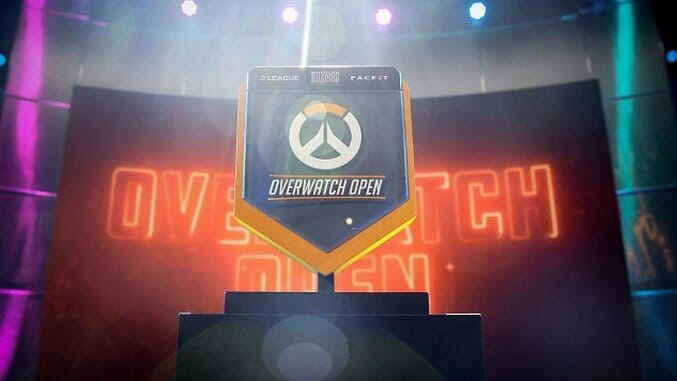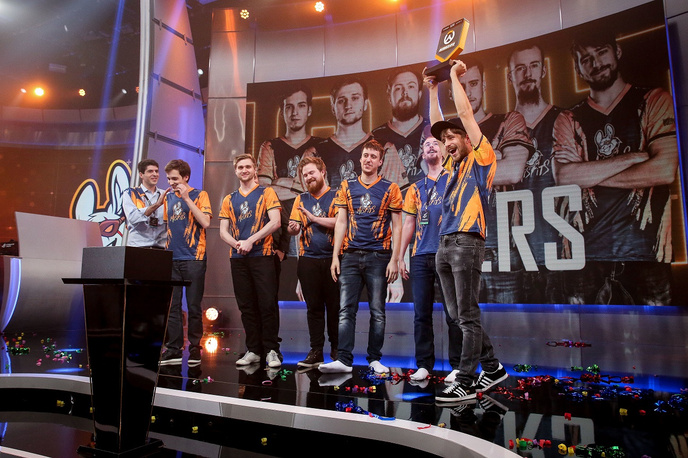The Overwatch Open Grand Final Underlined the Challenges of E-Sports
Photos courtesy of ELeague / Turner Sports
The Overwatch Open Grand Final, a mouthful of words if there ever was one, is about one thing: competitive Overwatch. You might be surprised that there’s a competitive scene around the game if you haven’t been paying close attention. After all, it’s about brightly-colored characters with goofy superpowers and weapons smashing into one another over and over. It has the feeling of a toy, or an action figure set, and just as my G.I. Joes never seemed like they were really in it for deep, serious combat, Overwatch seems like it might be an odd fit for the rough and tumble world of the modern first-person shooter competition scene.
People are serious about Overwatch competitive play. I mean, people are serious as shit about watching a man sit hunkered behind a computer controlling a giant scientist gorilla from the moon. They love watching him knock his enemies back and forth, raging the whole time. They cheer, and by “cheer” I mean scream, when an opposing player is eliminated (Overwatch’s more gentle term for “killed”). They stand up, they chant “USA! USA!”, and they do everything else you would expect from people who are gathered to watch bloodsport rendered down to cartoon detail.
I saw EnVyUs and Misfits play each other in the finals of the Open Grand Final. It was a good game, a 3 to 1 victory, with the underdog Misfits putting the favored team on tilt with a fast first match win that allowed them to push an affective advantage the whole way through. It was good play, too, with each team’s Tracer players putting on a hell of a show for an audience who is keyed in on what expert play looks like. It was strategic when it needed to be, and it was tactical when necessary, and the perfect harmony of those two factors always makes for an excellent show of sports skill.
Turner Broadcasting’s ELeague studio is where it all went down, and it’s such a strange place. I walked through a labyrinthine zone of twisting hallways and security guards. I entered a basement, the kind of rousing space where you can get a cup of coffee or sit in a weird little cafeteria. And then there was the arena itself, this shiny plastic and metal reflective theater space that you could imagine existing in some kind of Johnny Mnemonic remake but with, like, not enough money to do it right.
I don’t mean that as an insult. The area is, to my knowledge, predominately used to host seasons of ELeague’s own Counter-Strike: Global Offensive competitive league, and the space fits the aesthetics of the contemporary PC gaming market. This is a world of enthusiasts who love shiny LEDs, stylish fans on big graphics cards, and hollering at other dudes to git gud. Believe me, I know this world, and the space captures the aesthetic well.

